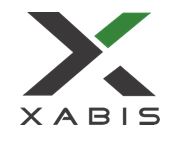 Extraction: What the Numbers Mean
Extraction: What the Numbers Mean
Guest post by Garret Nicodemus, PhD, COO of Xabis
The extraction process in the cannabis industry is common, but often misunderstood, especially when it comes to “the numbers.”
Extraction is commonly referred to as the process by which hash oil is extracted from the cannabis plant. There are a number of methods used for this extraction process. At Xabis, we have focused on what is called CO2 extraction – the use of carbon dioxide as the only solvent in the extraction process. We use this process because it produces a cleaner, purer end product, with greater efficiency and safety.
There are many “numbers” that are thrown around with respect to extraction. We most often hear the question, “What are your yields?” “Yield” is a term that has commonly been applied to the amount of mass extracted from the feedstock, compared to the mass of feedstock used. For example, a 100% yield would imply that the mass of the extract product equaled the mass of the initial feedstock. Obviously this cannot occur but a more realistic scenario is obtaining 90 grams of extract from 1 lb (454 g) of feedstock. This would equate to a “yield” of approximately 20% (90 g divided by 454 g = 19.8%).
This percentage, or the commonly referred to “yield,” is a practically meaningless number. Here’s why: Products made using material that has been extracted are measured and often sold based upon the amount of THC content. The “yield” does not measure THC content in any way. Thus, the potency, the amount of THC, is the most critical number to be concerned about.
The amount of THC in the extract is directly related to the amount of THC contained within the feedstock and how effective the extraction process is in removing and collecting it. Feedstock can have THC potencies that range from 0% to as high as 30%. Assuming the extraction process can obtain all of the THC in the feedstock, feedstock with higher THC content will result in higher THC extracted oils compared to feedstock with lower amounts of THC content.
When the cannabis plant is subjected to extraction, the end product can contain cannabinoids, terpenes, oils, waxes, lipids, proteins, and other plant material. The total amount of product has little to do with the actual value and efficacy of the product. The composition, or fraction of each component of the whole, really determines the potency, effect, and value of the extract. For example, Extract Company A processed 10 lbs of cannabis and obtained a yield of 20%. However the end product contained 20% THC. Extract Company B took the same feedstock and obtained a lower 10% yield but the final product contained 60% THC. Which extractor is better?
If we look at “yield” alone, Extract Company A beat out Extract Company B. But what if the product from Extract Company A contained more waste material thus increasing its final mass and the resulting yield? “Yield” is important, a processor should measure how much comes out of the process compared to how much goes in. However, a much more critical evaluation is what is called the “Extraction Efficiency.”
Extraction Efficiency is the amount of THC actually extracted, versus how much THC is available in the feedstock. A 100% Extraction Efficiency means that 100% of the THC in the feedstock is being extracted. In the example above, let’s assume the feedstock contained 10% THC by mass, thus 1000 grams of feedstock contains 100 grams of THC. Extract Company A obtained a “yield” of 20% (the mass of the material coming out of the extraction equipment is approximately 20% of the mass put in to the extractor) or approximately 200 grams of material. However, based on the potency of 20%, only 40 g of THC was extracted (20% of 20% of 1000g).
Using the same material, Extract Company B obtained a 10% “yield” – or approximately 100 grams of extract (10% of 1000g of feedstock). However, that 100 grams of extract is comprised of 60 grams of THC (60% of 10% of 1000 g of feedstock)– 50% more THC for the same amount of feedstock than the extract of Company A.
Although Company A obtained a higher yield, the Extraction Efficiency is 40% (40g THC extracted of the total 100 grams available in the feedstock).
Company B obtained a smaller yield (10% compared to 20%), but the Extraction Efficiency is 60% (60g THC of the total 100 grams available has been extracted).
As most products are sold based on their THC content, the extract from company B is a much more profitable and efficient extraction process. The extract from Company B contains more useable, saleable THC from the same plant material. Thus there will be a higher number of products that can be made.
As you can see from the examples above, “yield” is important, but has very little do with the actual effectiveness or efficiency of the extraction process. The key is Extraction Efficiency, the amount of THC actually extracted, versus how much THC is available in the feedstock. Extraction Efficiency has a huge impact on your profitability.
 About the author:
About the author:
Garret Nicodemus, PhD, is the COO of Xabis and leads both engineering and scientific development of the supercritical extraction process, using his background in separations and process design and his proficiency with process simulation software (e.g. Aspen Plus, HYSYS). Garret was previously a lecturer and senior researcher for the Department of Chemical and Biological Engineering at the University of Colorado Boulder, securing over one million dollars in grants and company funds, and instructing classes on extraction technologies. Garret holds a PhD and MS in Chemical and Biological Engineering from the University of Colorado in Boulder and a BS in Chemical Engineering from Lafayette College.
Are you a cannabis industry thought leader and want to be heard? Let us know your story.
